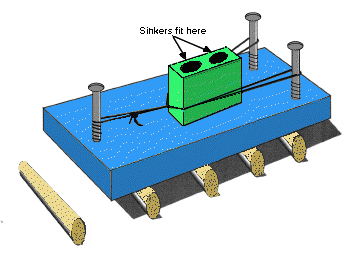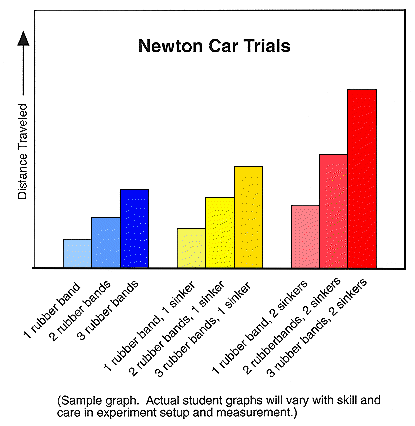Objective: To demonstrate Newton's Second Law of Motion by showing the reaction of a rolling car by increasing its mass and acceleration.
TOPIC: Propulsion
Description: In this activity, students test a slingshot-like device that throws a wooden block that causes the car to move in the opposite direction.
EDITED BY: Roger Storm, NASA Lewis Research Center

Discussion: The Newton Car provides an excellent demonstration of Isaac Newton's Second Law of Motion. By repeated trials of the experiment, it will become clear that the distance the car travels depends on the number of rubber bands used and the mass of the block being expelled. By adding sinkers to the block, the mass of the block is increased. By adding rubber bands, the acceleration of the block increases. (Refer to the chapter on rocket principles for a more detailed explanation of this law. The cannon and cannon ball example in the chapter is very similar to the Newton Car.)

This activity offers a number of opportunities to combine science and mathematics. Mathematic skills that can be employed include measurement, recording data, plotting data on a graph, and interpreting graphical data.
Because this activity involves the use of matches, be sure to exercise proper safety procedures.
Caution: Provide adequate ventilation and a place to dispose of used matches. Scissors can be substituted for the matches but are not as effective. Using scissors requires some practice because the scissors must be quickly withdrawn after cutting the string so as to not interfere with the reaction motion of the car. Permit students to test this principle for themselves by first stepping and then jumping off a stationary skateboard. Observe how far the skateboard travels.
Caution: Be sure to have a student spotter nearby so the student will not get hurt jumping from the skateboard.
.
GO
BACK TO THE ROCKET ACTIVITIES
Aerospace Education Services Project Oklahoma State University